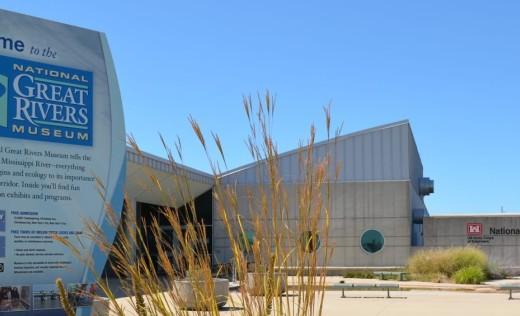
ALTON – The National Great Rivers Research and Education Center (NGRREC?) is announcing a weekly seminar series, featuring scientists from around the world.
Get The Latest News!
Don't miss our top stories and need-to-know news everyday in your inbox.
The seminars will be held at 3 p.m. every Thursday at NGRREC’s Jerry F. Costello Confluence Field Station in East Alton, and are open to the general public.
“These weekly NGRREC? seminars are a critical addition to NGRREC’s calendar,” said Anthony Dell, a research ecologist with NGRREC?, who will be hosting the seminar series. “They will ensure our scientists are kept abreast of new and novel research being undertaken across the globe and should be critical in maintaining and forming new collaborations towards our goal of better understanding the socioecology of big rivers around the world. They also present a fantastic opportunity for the public to come to NGRREC? and learn more about the natural world and the kinds of research we undertake here.”
The NGRREC? Seminar Series begins Thursday, Feb. 5, with a talk by Carl Cloyed, a student from the University of Louisville who is working toward his doctorate in life sciences. Cloyed will discuss using stable isotopes to determine how frogs partition food resources and the role of niche variation in structuring frog assemblages.
Stable isotope analysis is a frequently used tool for determining diets and habitat use in animals. Its accuracy depends on quantifying the tissue-specific trophic discrimination factors (TDFs) and isotopic incorporation rates for focal taxa. Trophic discrimination factors are the differences in stable isotope values between a predator and its prey. Isotopic incorporation rates measure how quickly isotopes are incorporated into tissues, and thus, provide a timeframe for diet.
“These properties have never been determined in adult frogs,” Cloyed said. “I determined these isotope properties in the skin, whole blood and bone collagen of adult Lithobates clamitans. I then used isotopes to examine resource partitioning among five species of frogs and toads to investigate how variation within populations may promote species coexistence. I found that five species of frogs and toads, Anaxyrus americanus, A. fowleri, L. catesbeianus, L. clamitans and L. sphenocephalus, partitioned resources in subtle ways.”
The seminar series will continue at 3 p.m. the following Thursday, Feb. 12, with a presentation from Arnaud Sentis, who is a postdoctoral research fellow at the University of South Bohemia in the Czech Republic. The seminar is entitled “Environmental Stress? Symptoms, Acclimation and Adaption.”
Sentis will discuss how thermal (temperature) stress, like animals and plants are currently experiencing with climate change, influences feeding interactions in ecosystems; how predators can modify the impact of acute thermal stress, for example heat waves; how acclimation can help species cope with chronic thermal stress and increases species persistence, and how phenotypic response to predation stress could be encoded in the DNA sequence through epigenetic mechanisms.
The National Great Rivers Research and Education Center is a partnership of Lewis and Clark Community College, the University of Illinois at Urbana-Champaign, and the Prairie Research Institute’s Illinois Natural History Survey. NGRREC? aspires to be a leader in scholarly research, education and outreach related to the interconnectedness of big rivers, their floodplains and watersheds, and the people who use them.
For more information, visit www.ngrrec.org.
More like this:
